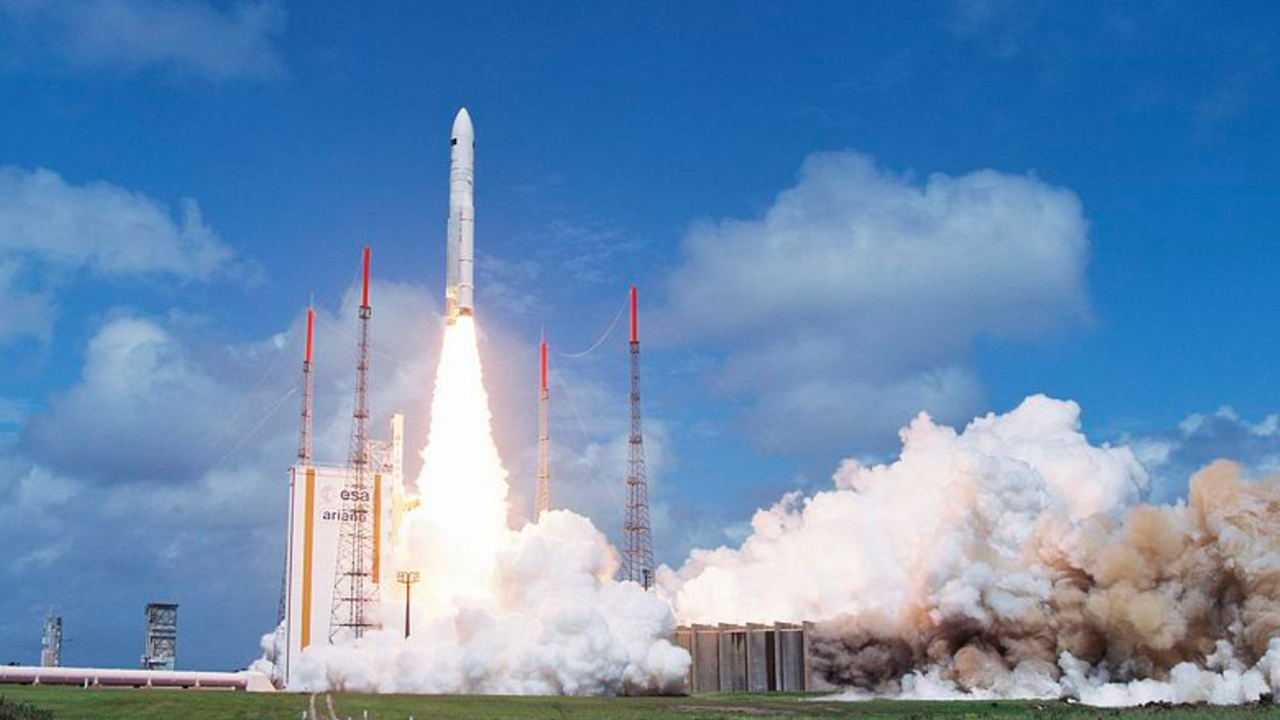Ariane 5: A unique launcher, iconic missions – Herschel and Planck
01.08.2023

After 27 years of incredible feats and 111 successful launches, Ariane 5 lifted off for the final time on July 4 last. To mark this event, let’s take another look at its most significant missions. The series continues with the dual Herschel/Planck mission.
On May 14, 2009, Ariane 5 lifted off from the European spaceport in Kourou, French Guiana. On-board were the Herschel and Planck space telescopes, designed to reveal the mysteries of the Universe.
Telescopes to pierce the mysteries of the Universe
Herschel and Planck were the European Space Agency’s (ESA) cutting-edge space telescopes, both designed to reveal some of the Universe’s most closely guarded secrets. Herschel – the largest telescope so far ever built – was devoted to studying the birth of stars and the first galaxies. The Planck science observatory, a sort of “time machine”, scanned the far reaches of space in search of the “fossil” cosmic microwave background radiation emitted after the Big Bang.
A technological challenge for Ariane 5
This was another major challenge for Ariane 5, the only launcher on the commercial market capable of launching two payloads simultaneously. The most powerful version of the launcher, the ECA, was installed on the launch pad for the mission.
The two satellites had to be placed separately on escape trajectories enabling them to reach the second Lagrange point (L2), nearly 1.5 million kilometers from Earth.
The velocity of the launcher carrying the two satellites was about 10 km/s at the moment Herschel and Planck were released onto their own specific trajectories.
Herschel and Planck separated from the upper stage after 26 and 28 minutes of flight respectively. Twelve minutes later, the ground stations received the first signals indicating that the launch was a success.
The two satellites now continued on their respective journeys through space, to the same highly strategic destination: L2 is one of those rare points in the Solar System where the gravitational attraction from Earth and the Sun balance each other.
Prime real estate in space
An object positioned there is effectively “suspended” by the balanced gravitational forces and can remain in a fixed position with minimal energy consumption.
Another advantage of being positioned at the L2 point is that at this location, the satellite is protected from the heat emitted by the Earth and the Moon and from solar radiation, helping to ensure the success of its mission.
Finally, because L2 is located 1.5 million kilometers directly “behind” the Earth as seen from the Sun, it is an ideal location from which to make observations of the wider Universe.
A lasting scientific heritage
Herschel’s astounding infrared images revealed previously unknown details about the formation of stars, galaxies and complex organic molecules. For its part, Planck mapped the cosmic background radiation with unparalleled precision, providing crucial information about the structure and history of the Universe. Their discoveries opened up new perspectives in the fields of astrophysics and cosmology. By combining the observations of the distant Universe made by the two missions, astronomers have discovered the possible origin of the vast galaxy clusters today visible. And the images are of course spectacular!
This is has generated a huge amount of studies and is helping us understand more about the Universe and how it has developed.
With the successful launch of Herschel and Planck, Ariane 5 once again demonstrated its reliability and its ability to carry out large-scale ambitious scientific missions. This mission will for ever occupy a special place in the history of space exploration and our quest to understand the origins of our Universe.